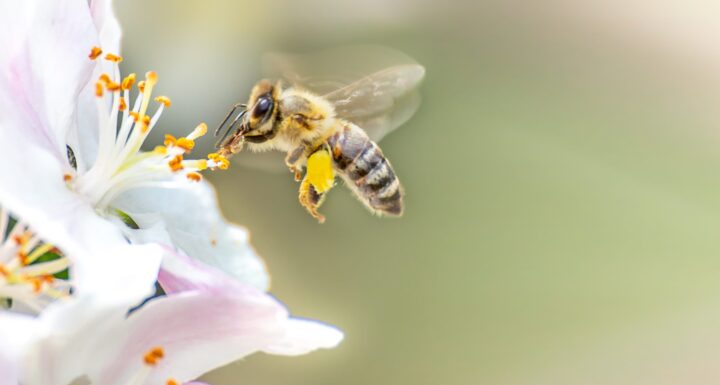BloomX’s Robee and Crossbee mimic the different pollination effects of wild bees, reducing reliance on declining pollinator populations and increasing crop yields and fruit size.
Benefits
- Higher crop yields
- Larger fruits
- Less dependence on declining pollinators
Applications
- Agriculture
UN Sustainable Development Goals Addressed
-

Goal 2: Zero Hunger
-

Goal 12: Responsible Production & Consumption
-

Goal 13: Climate Action
The Challenge
The vast majority of the world’s food crops rely on pollinators of one kind or another.
Local wild pollinators still perform this function in some contexts, but modern farming techniques have largely broken this system. Chemical herbicides and pesticides have removed many pollinators and the wild plant species they rely on from agricultural lands. Additionally, the vastness of many single-crop plantings isolate much of their area from the practical range of wild pollinator populations nearby.
For these reasons and others, most farms today rely on managed western honeybee populations for pollination. This species’ adaptability to different climatic conditions and flower types as well as their nesting habits make them easy to control and deploy wherever and whenever they are needed. Managed honeybee colonies can have a detrimental effect though, outcompeting native pollinators, and spreading diseases. And like other insect pollinators, they also face serious threats from pesticides and disease.
Furthermore, there are some crops that western honeybees simply aren’t very good at pollinating.
Biological Model
Different kinds of bees have different ways of collecting pollen, and in some cases, those strategies have evolved to more efficiently pollinate certain types of flowers. Some bees (such as bumble bees) can use buzz pollination: without moving their wings, they vibrate their flight muscles to shake pollen loose. This is especially beneficial for plants such as blueberries, whose flowers release their pollen through tiny pores, like salt through a saltshaker.
Much pollination is also helped along by static electricity. When bees fly, they accumulate a positive charge. Then, when they land on a negatively charged flower, their positive charge causes the pollen to jump and cling to their tiny hairs.
Innovation Details
BloomX has developed a buzz pollinating device for blueberry bushes and an electrostatic pollinating device for avocado orchards that they couple with an algorithm that uses environmental data to predict the best time to pollinate crops each day.
Western honeybees aren’t very efficient at pollinating either plant—blueberries, because they can’t engage in buzz pollination, and avocados, because they generally prefer other flowers that bloom at the same time. These crop-specific pollinating devices lead to higher rates of pollination, meaning higher yields and bigger fruits for farmers and the people they feed.
Robee, the buzz pollinator, looks somewhat like a large lawnmower. It’s battery-powered and has a vibrating arm on each side to gently shake pollen loose. Crossbee, the electrostatic pollinating device, looks like a tractor with broom handles protruding from the sides, and a series of serving trays attached to each broom handle. The “serving tray” is actually an electrostatically charged plate that attracts pollen from one avocado flower and deposits it on another.
Video: New Pollination Devices Inspired by Bees Increase Crop Yield

The Human Factor
For BloomX founder Thai Sade, agriculture was a part of daily life from a young age. In college, where he studied sustainability, he became preoccupied with the issue of food security. He wanted to contribute to improving the efficiency of food production but wasn’t sure how. After learning about the effects of low pollination rates and of researchers’ attempts to create bionic bees to help fill in, he found his niche. The solution, he realized, did not require the pollination device to look like a bee––but to function like one.
Ray of Hope Accelerator
The Ray of Hope Accelerator supports an annual cohort of ten high-impact nature-inspired startups representing various sectors and regions addressing the world’s biggest environmental and sustainability challenges. The accelerator builds upon years of experience as the Ray of Hope Prize. Created in honor of Ray C. Anderson, founder of Interface, Inc. and a business and sustainability leader, the $100,000 Ray of Hope Prize (2020-2023) shone a light on the innovative, nature-inspired solutions that we need to build a sustainable and resilient world. BloomX was selected as a finalist for the 2023 Ray of Hope Prize.






